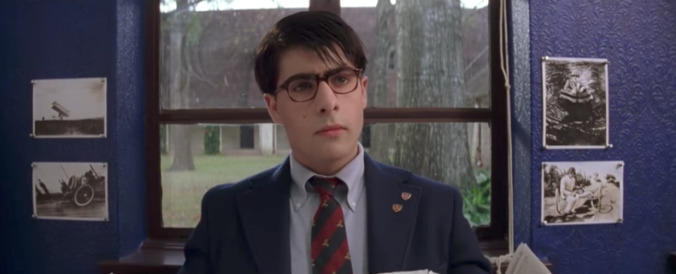
Despite being only his second feature film, Wes Anderson’s Rushmore contains many of the stylistic elements and techniques that would eventually become synonymous with the director’s work, albeit in a more grounded, realistic package. But, in addition to being a logical continuation of the auteur’s creative maturity, the film is also informed by Anderson’s own coming-of-age tale as a young, weird boy at an elite private Texas high school. In the latest impressively detailed breakdown from ScreenPrism, we see how Rushmore is not only a movie about characters coming to terms with their need to grow up, but also a movie about a director coming to terms with the ambitions of his younger self.
Like the film’s lead character Max Fischer (Jason Schwartzman), Anderson was an underachieving student in high school who invested more time and energy into extracurricular activities than schoolwork. The comedically absurd level of confidence expressed by Max throughout the film mirrors the confidence necessary for young creatives like Anderson to follow through with their dreams. But, ultimately, the message of the film is that our ambition, or the object of our obsession, will either allude us or fail to fix us in the way we imagined it would. This theme of forced maturity comes up again and again in Anderson’s work, but is never more distinct than in Rushmore, partly because Rushmore focuses on high school, a time in our lives when the idea of “growing up” is never more tangible.
Take these thematic elements, add in some center-framed cinematography, a chapter-like structure, a soundtrack of 1960s B-sides, and Bill Murray, and you’ve got yourself a Wes Anderson starter pack. It’s no surprise that nearly 20 years after its release, Rushmore is still looked upon by some as the director’s best, most complete work.
[via Laughing Squid]